| |
 |
NSW approves access for PBS combinations at up to 85.0t Under the National Class 2 Performance Based Standards (High Productivity) Authorisation Notice 2022 Early this week NSW launched its new PBS High Productivity network which allows eligible PBS combinations to operate at up to 85.0t (tier 3 mass) on a pre-approved network. This pre-approved network covers a wide range of roads connecting other states and rural areas to major ports all over the eastern seaboard. This network expands on Victoria's PBS High Productivity network and together provides pre-approved access for eligible PBS combinations in both VIC and NSW. Important Notes NSW: - The NSW schedule of this notice only covers PBS Level 1 Quad Axle Semitrailers, PBS Level 2B B-Doubles (both quad-axle and tri-axle groups), and PBS Level 2B A-Doubles with a tandem-axle dolly.
- Only PBS A-Doubles that match one of the reference vehicle designs can operate under this notice above 68.5t and up to 85.0t.
- The mass limit in VIC is 85.5t and in NSW is 85.0t.
- Both VIC and NSW have regulatory telematics conditions.
PBS A-Double Reference Vehicle 1 at 85.0t network (screenshot) Note: Most restricted structures (black circles) are not located on the approved network and only visible to indicate structures in which access under permit is not possible. NSW PBS Telematics Conditions PBS vehicles at all performance levels (i.e. Level 1-4) that meet Tier 1 bridge formulae must be enrolled in; - RIM when operating at General Mass Limits (GML) or Concessional Mass Limits (CML), or
- TMA (or alternatively IAP) when operating at Higher Mass Limits (HML).
PBS vehicles at all performance levels (i.e. Level 1-4) that do not meet Tier 1 bridge formulae must be enrolled in; - TMA (or alternatively IAP) when operating at GML, CML or HML.
VIC PBS Telematics Conditions PBS combinations that exceed 26 metres: - TMA(or alternatively IAP).
PBS combinations that exceed 68.5 tonnes: - TMA and Smart On-Board Mass (OBM)
PBS Quad-axle semi-trailers that exceed 46 tonnes GCM up to a maximum mass of 50.5 tonnes: - TMA and Smart On-Board Mass (OBM)
|
| |
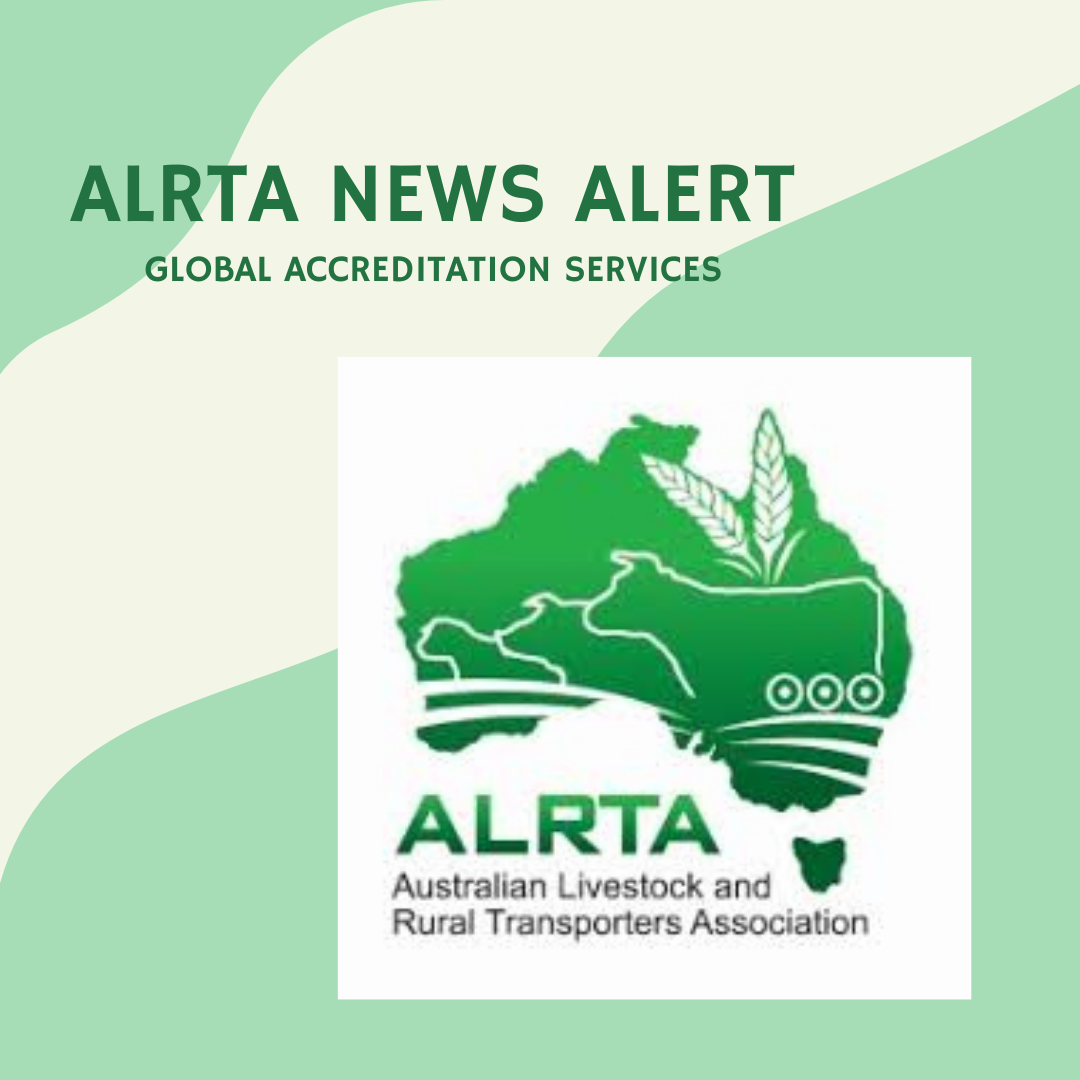 |
HVNL REVIEW ALMOST COMPLETE ALRTA participated in a workshop to finalise the recommendations arising from the review of the Heavy Vehicle National Law.
It is fair to say that the transfer of responsibility for the review to an independent consultant, bringing together industry and jurisdictions, and the radical new approach proposed by ATA have helped to produce a better result than was initially expected. It is however far from perfect, representing a negotiated outcome across a plethora of stakeholders.
In many cases, the proposed reforms will not solve our immediate problems, but they will at least deliver a HVNL that is better able to cater for new and innovative approaches in future – which means that the groundwork will be laid, but we will still need to make the case and progress more specific reforms to get the end-result we need.
Buckle up. There is still a long ride ahead. HVNL FEES AND FINES TO INCREASE NHVR access permit fees will increase by $2 and the cost of a National Driver Work Diary will increase by $1 (from $25 to $26) from Friday, 1 July 2022. Fees will also increase for National Heavy Vehicle Accreditation Scheme modules. These increases are in line with CPI.
Heavy Vehicle National Law penalties and fines will also increase in line with CPI.
Click here for the new NHVR fee schedule
Click here for the new HVNL penalty and fine schedule ADBLUE AND FUEL TAX CREDITS Now that the federal election is over, the government is starting to re-engage on this important issue. The heavy involvement of the fuel majors has concentrated the minds of government and AdBlue suppliers.
Indonesia has increased its exports to Australia, as has a host of other countries. Domestic supply is also moving with particular developments in WA and SA likely to come on stream.
We understand that the new Federal Government is now considering a position on the previous government’s approach to fuel excise cuts and fuel tax credits. REGISTER FOR NHVR PORTAL TRAINING Join NHVR for our next round of NHVR Portal webinars, where you’ll learn more about the NHVR Accreditation Module, how to better manage your Portal account, and some useful tips to plan your route. You can register for each session below.
Managing your Portal account
28 June 1pm AEST
Learn how to set up, make changes and manage users on your account.
Register here
Let's talk Accreditation
29 June 1pm AEST
This session will cover most common accreditation related questions.
Register here
Planning your route
5 July 1pm AEST
Live demo of route planning with useful tips and things that will save you time.
Register here |
| |
| |
| 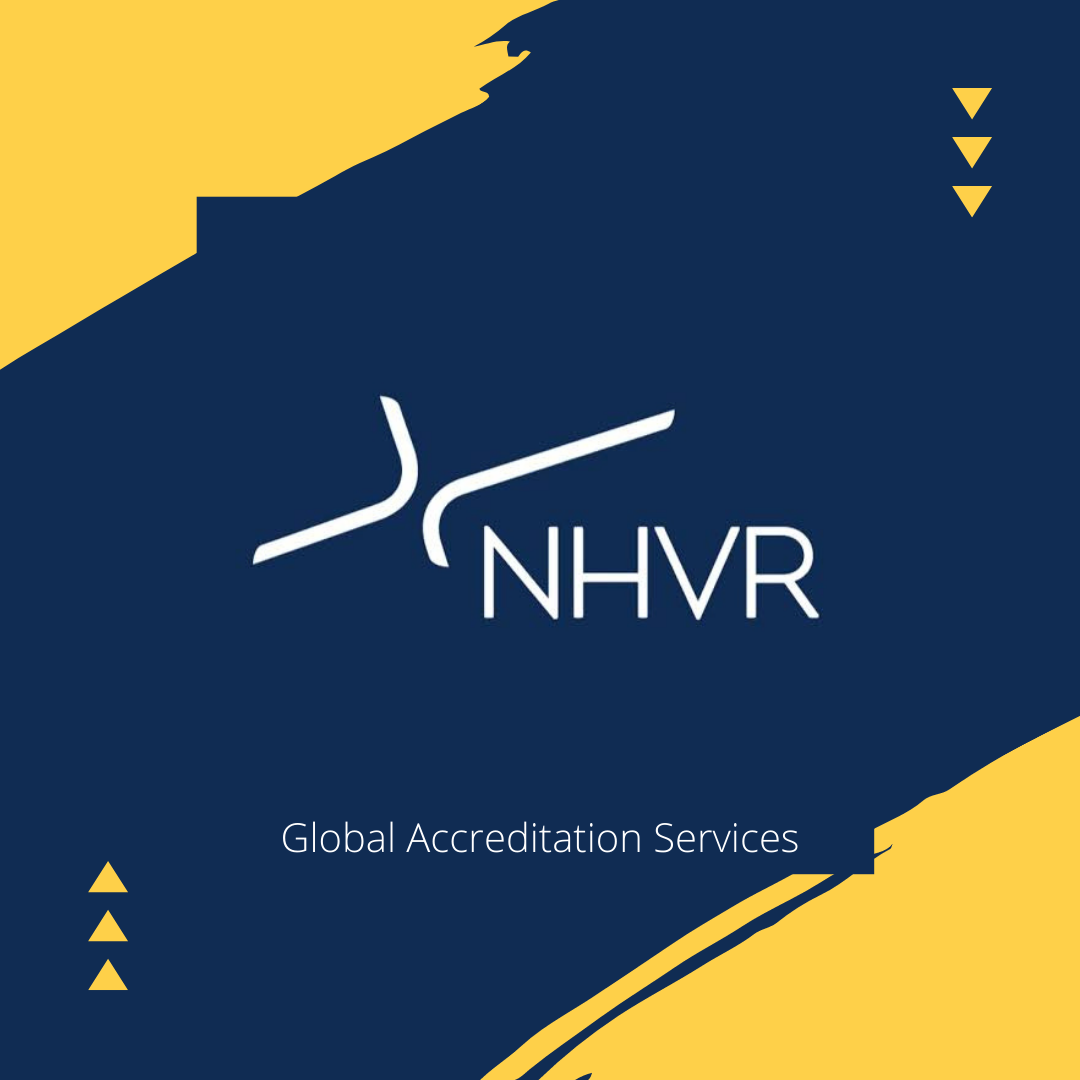
|
| NHVR seeks industry feedback with livestock discussion paper The NHVR has released a Livestock Mass, Dimension and Loading Arrangements discussion paper which provides the first stage of our review of state-based heavy vehicle livestock loading arrangements.
The livestock industry is subject to a variety of national, state and territory transport and non-transport laws, including laws around fatigue, vehicle standards, vehicle speed limits and licensing, in addition to animal welfare.
It also has its own unique challenges – including vehicle mass, dimension and load limits, the movement of live animals, and vehicle safety and compliance.
The discussion paper provides an opportunity for industry, government and other interested stakeholders to provide their feedback on current livestock arrangements and what options are available for reforming livestock transport access.
Your feedback is important and will help improve safety, productivity and efficiency for the livestock transportation industry.
Click here to have your say on the NHVR’s review of livestock mass, dimension and loading arrangements. Advice on risks of submitting false or misleading information The NHVR has released a Regulatory Advice to assist operators to understand the information they are required to submit to officials under the Heavy Vehicle National Law (HVNL).
Under the HVNL anyone who works in the heavy vehicle industry must provide accurate and truthful information about their transport activities.
Submitting verbal or written information to the NHVR or other officials that is false or misleading – either knowingly or recklessly – is an offence and subject to prosecution.
The easy-to-follow guidelines explain the HVNL requirements and provides useful examples to illustrate, for example, what happens if a driver falsifies their work diary or provides false vehicle mass limits to a loader.
Click here to read the new regulatory advice on ‘Providing false or misleading information to the NHVR’
Or click here for more regulatory advice from the NHVR. Joint operation to target waste load compliance A joint South Australian operation with the Environment Protection Authority (EPA) and the NHVR was carried out educate waste transporters about the need to restrain all loads.
EPA Investigations Manager Stephen Barry said Safety and Compliance officers performed heavy vehicle on road compliance and enforcement activities expiations of $192 sent to eight operators.
“Waste escaping from trucks can cause can create a hazard for other drivers and a litter problem on public roads, and it can also end up in stormwater or waterways,” Stephen said.
NHVR Director of Southern Region Operations Paul Simionato said it was important owner-operators understood their safety and regulatory obligations when transporting waste.
“Companies have a legal duty to ensure every load is secured adequately and they provide appropriate scheduling for drivers in order to maintain safety on our roads,” he said.
> Read the full article from EPA SA here New commitment to work together on truck safety Industry body TruckSafe and the NHVR will work together to improve road safety for all Australian truck drivers.
NHVR CEO Sal Petroccitto said the two organisations were working together to investigate common auditing approaches to help industry and inform the development of a national auditing standard being as part of the Heavy Vehicle National Law Review.
“It is important for the NHVR and industry to collaborate on safety and productivity improvements,” Sal said.
“Together with industry, we hope to progress a safer, more productive heavy vehicle industry, while reducing the regulatory burden.”
TruckSafe Chair, Paul Fellows said it was a welcome and logical move.
“Ultimately TruckSafe and the NHVR have the same aim for a safe industry,” he said.
“We’re hoping to start with driver health because our industry’s most important asset is our drivers.”
|
| |
| 
|
| National body to regulate heavy vehicles in NSW from 1 August Heavy vehicle safety services across NSW will have a new home from 1 August with the transition of key regulatory functions from Transport for NSW to the National Heavy Vehicle Regulator (NHVR). Tara McCarthy, Deputy Secretary of Safety, Environment and Regulation at Transport for NSW said the transition was the next step toward nationally consistent compliance for all heavy vehicle operators travelling across NSW. “Heavy vehicles travelling within and through NSW will benefit from this next step in building a single, consistent national regulator for the heavy vehicle industry,” Ms McCarthy said. “From 1 August roadside enforcement, investigations, prosecutions, and scheduled heavy vehicle inspections currently provided by Transport for NSW, will be some of the services transferring to the NHVR, along with 340 Transport for NSW staff who currently support the industry. “The NSW Government has worked closely with the NHVR over the past 18 months to ensure the NHVR will be able to maintain or improve both the standard of transitioning services and also heavy vehicle safety standards in NSW. This will support the work the NHVR is doing across other states. “This is part of a national reform program that will make the regulation of heavy vehicle movements across Australia even safer and more efficient.” The NHVR will continue to deliver services from the more than 200 existing Heavy Vehicle Inspection Stations, safety stations and on-road enforcement sites across NSW. The most noticeable change for operators will be that the current Transport for NSW Compliance Operations Inspectors will become NHVR Safety and Compliance Officers. Transport for NSW will continue to provide a number of other important heavy vehicle services, including licensing, registration and tow truck investigations and compliance. NHVR CEO Sal Petroccitto said the transition of services would support the NHVR’s goal of borderless regulation of heavy vehicles and improved consistency for operators. “This transition is another step in reducing the impact of state borders on the movement of freight across Australia,” Mr Petroccitto said. “We’ll be working with industry to ensure the transition is as seamless as possible. “With more than half of all Australian heavy vehicle movements occurring within or through NSW, this state is vital for the safety and productivity of the heavy vehicle industry. “In particular we’ll be working with our staff to ensure a more consistent approach to compliance and enforcement regardless of where you’re intercepted.” The NHVR was established in 2013 as a statutory authority to administer the Heavy Vehicle National Law, which applies in all Australia's states and territories except the Northern Territory and Western Australia. NSW is the fifth Australian jurisdiction—after South Australia, Victoria, Tasmania and the ACT—where the NHVR will be directly delivering heavy vehicle regulatory services. For more details on the transition visit www.nhvr.gov.au/about-us/national-services-transition |
| |
| |
| 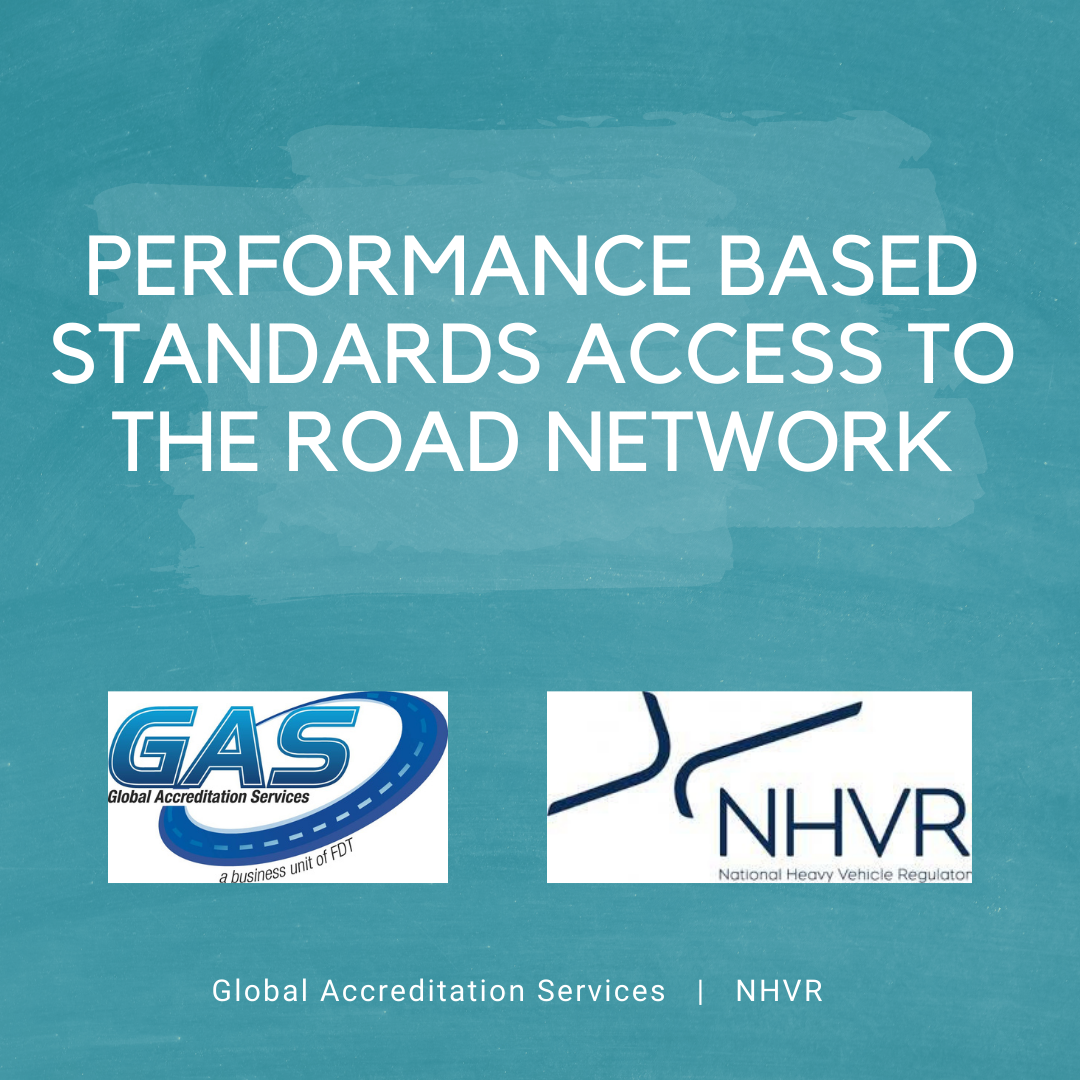
Performance Based Standards access to the road network The NHVR would like to remind owners of Performance Based Standards (PBS) vehicle combinations to check that their PBS Vehicle Approval (VA) is valid and up to date.
Please be aware that the PBS Vehicle Approval is not an authorisation to access the road network. You must comply with the relevant Notice or obtain an access permit. To apply for an access permit, please visit theNHVR Portal.
For more information on PBS Notices visit: Got questions? Email the NHVR - info@nhvr.gov.au with ‘Attn PBS’ in the email subject line. |
| 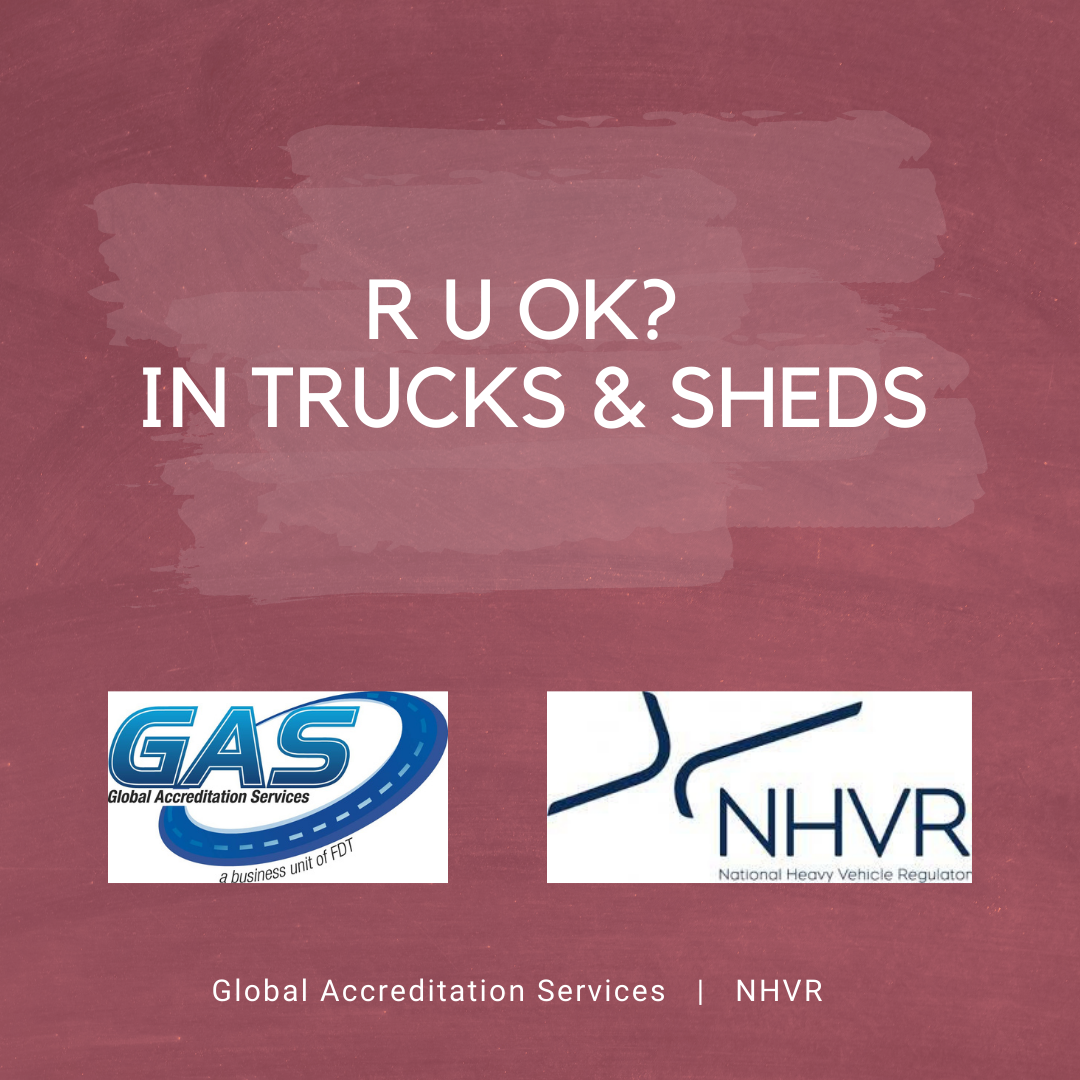
R U OK? in Trucks & Sheds R U OK? and Healthy Heads in Truck & Sheds have teamed up to ensure those in the road transport, warehousing and logistics industries know when and how to meaningfully connect and genuinely ask “Are you OK?”
Life’s ups and downs happen to us all, but those working in the road transport, warehousing, and logistics industries can face unique challenges.
Tight deadlines, long hours, shift work and isolation are all factors that contribute to feeling less connected.
One thing we can all do, is drive conversations with our work mates who might be doing it tough, to help them feel connected and supported at work.
Show your support by hosting an ‘R U OK? in Trucks & Sheds’ event at your workplace on 17 May 2022.
> Click here for more information and register your R U OK? in Trucks & Sheds event |
| 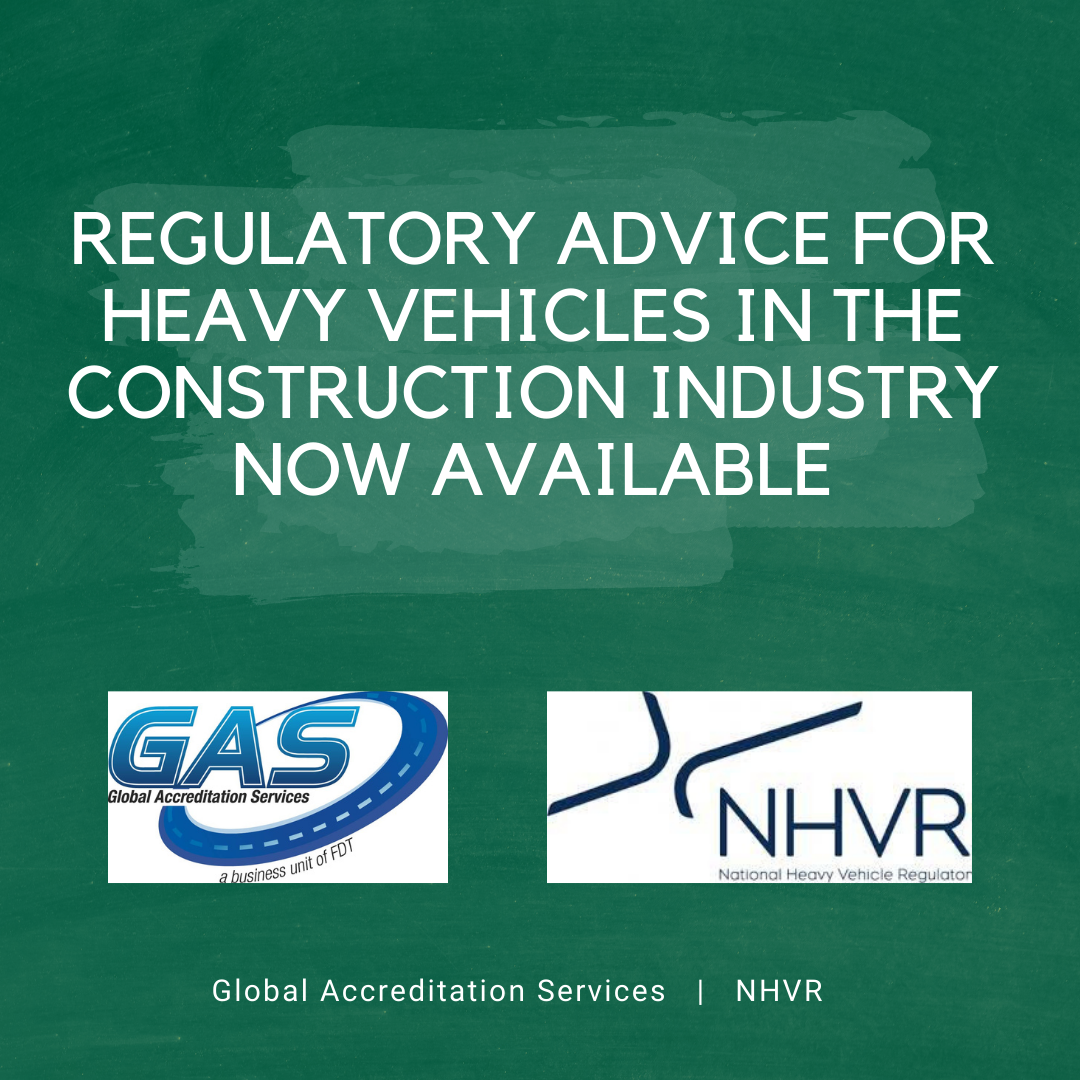
Regulatory Advice for heavy vehicles in the construction industry now available Managing the hazards and risks associated with heavy vehicles in the construction industry is the latest subject in the NHVR’s new regulatory advice series. Based on reports from compliance officers and the 2021 National Roadworthiness Survey, heavy vehicles have an observed pattern of non-compliance when used in construction activities. As projects pick up across the country, the NHVR will be increasing its safety and compliance activities, with a focus on Chain of Responsibility (CoR) in the construction industry. The regulatory advice explains the CoR laws and is tailored to address the concerns of industry executives as well as heavy vehicle operators.
For construction company or construction contractor executives: read ‘Managing the risks of heavy vehicle transport activities in the construction industry – Principal Contractor’
For construction heavy vehicle operators and their executives: read ‘Managing the risks of heavy vehicle transport activities in the construction industry – Operators’
We will keep you updated as more topics are added to the series. In the meantime, you can view more regulatory advice here. |
| 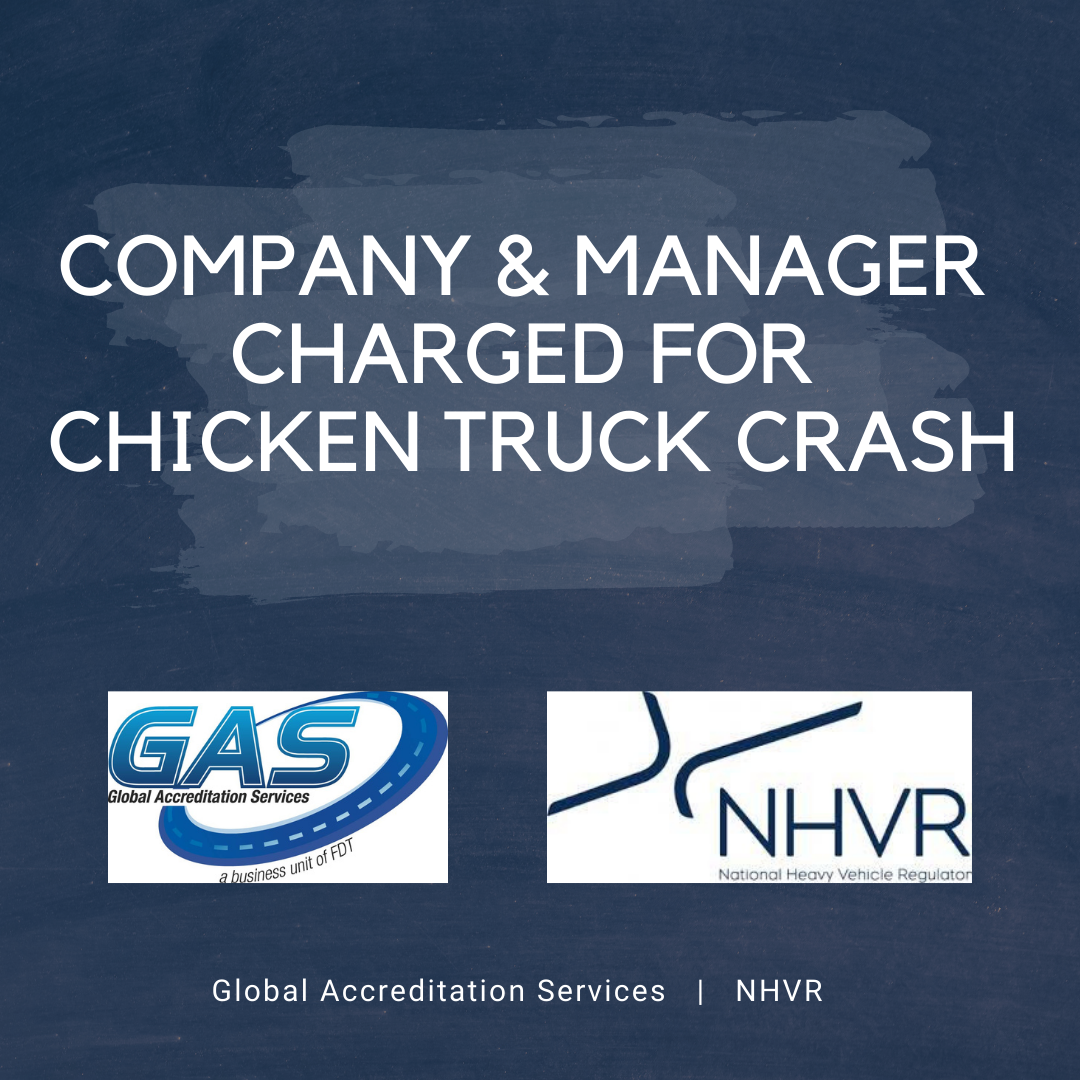
|
| Company and manager charged for chicken truck crash Charges have been laid against a transport company and sub-contracted manager after a heavy vehicle transporting live chickens crashed at Remembrance Drive in Cardigan, Victoria, in February 2020. Victoria Police Heavy Vehicle Unit conducted an extensive investigation into the crash, which led to the current category 1 and 2 charges under the Heavy Vehicle National Law (HVNL). The charges refer to a breach of duty creating risk of serious injury, illness, or death. NHVR Director of Prosecutions Belinda Hughes said the heavy vehicle driver, who had told his boss he needed to rest, was lucky to escape with his life. “The company and manager are now being charged with the most serious offences under the HVNL for failing to fulfil their primary duty obligations, which put the driver and other road users at serious risk,” Belinda said. The matter will next be heard on 20 May 2022 at The Melbourne Magistrates’ Court in Victoria. |
 |
| The relaxation of social distancing requirements and the reopening of interstate borders now enables audits to be conducted in person at the operator’s operating address. It also means drivers operating under a fatigue module can obtain a medical certificate as required by the NHVAS Business Rules and Standards. The temporary changes to the NHVAS medical requirements and face-to-face audit requirements will cease on 29 April 2022. What does this mean? After 29 April 2022 - All NHVAS compliance audits must be conducted in person at the operator’s location.
- All drivers nominated under an operator’s BFM or AFM fatigue management accreditation must have a current medical certificate.
Remote auditing exception It is acknowledged that some NHVAS audits will have already been booked and approved to be conducted remotely after 29 April 2022. Audits approved prior to 29 April 2022 can still be conducted remotely after 29 April 2022 under the previous rules. The NHAVS Approved auditor may: - request that documents and records are sent to them electronically, or by another suitable method and;
- conduct interviews with operator representatives via telephone.
Suitable controls must be used to ensure that the auditor’s conclusion can be substantiated with reliable and credible evidence. You must still: - ensure policies, procedures and records are made available for analysis
- ensure parties are available for interview where necessary
- follow the normal process for audits to be approved.
Further support If the current situation changes and new advice is provided by the Australian Government Department of Health, the NHVR will reassess approval conditions as necessary. If you are experiencing any issues associated with meeting your accreditation requirements or believe there may be issues having an audit completed, please ensure that you contact the NHVR as soon as possible before your accreditation expires. For assistance or further information contact the NHVR on 13 64 87, or Greg Harmes on 0417 585 223. |
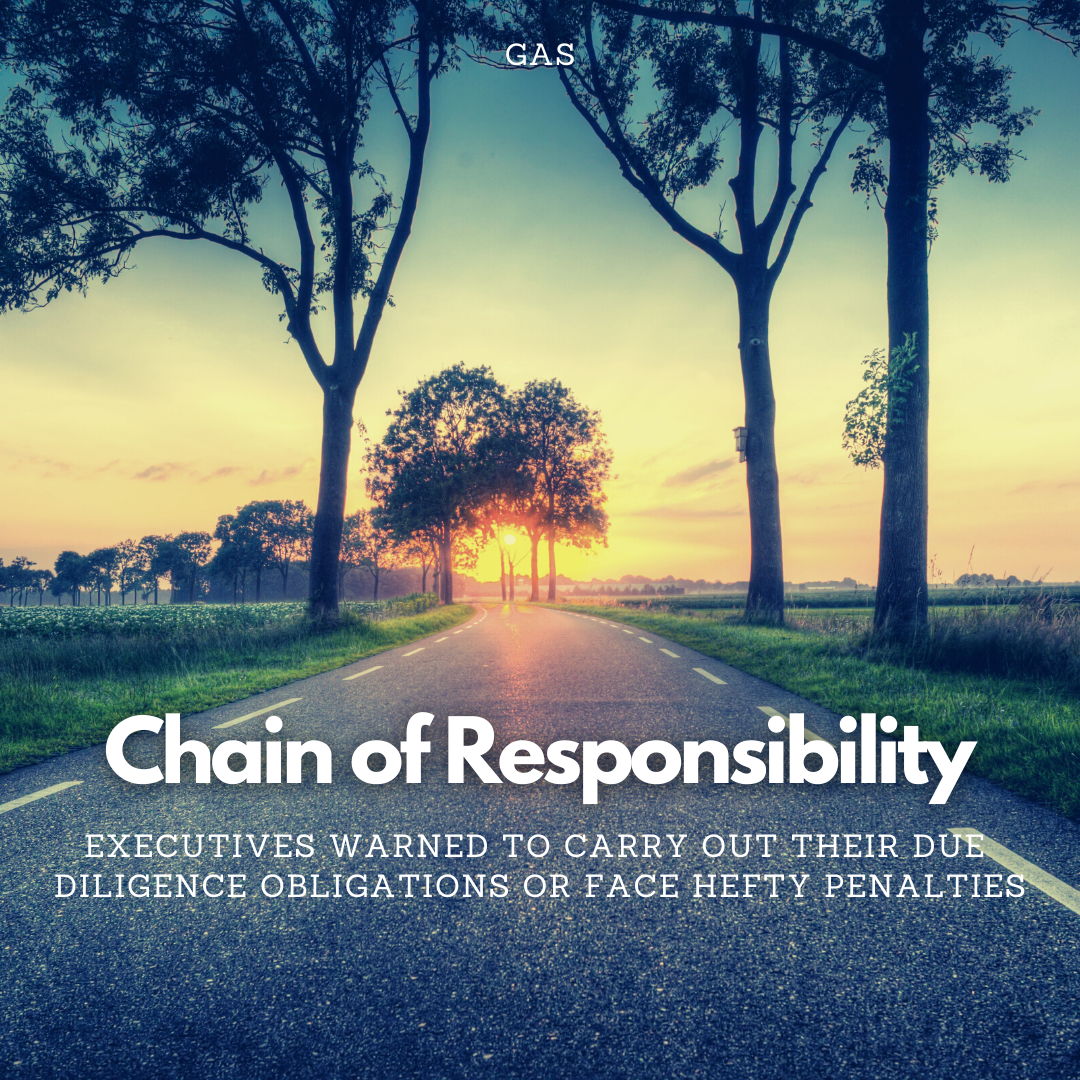 |
| It has been over 3.5 years since the sweeping changes to the chain of responsibility laws came into force. In a recent newsletter published by the National Heavy Vehicle Regulator (Regulator), the Regulator warned executives of parties in the chain of responsibility to be aware of their obligations under the Heavy Vehicle National Law (HVNL).
According to the publication, the Regulator is already undertaking six investigations of serious offences under the HVNL. In addition to this, another eight cases are being monitored and considered for further action. According to Ray Hassall, the Regulator’s Statutory Compliance Executive Director, the Regulator’s investigations are “targeted at serious, systemic safety breaches and respond to information gathered through multiple sources, including the Regulator’s Confidential Reporting Line.” According to Mr Hassall, the Regulator is focusing on “the extent to which an executive has satisfied their individual due diligence obligations, in addition to other roles within the supply chain.”
The investigations reportedly concern:
Directions to disregard work/rest requirements;
The absence of a system for managing risks;
Ineffective driver monitoring systems; and
Poor load restraint practices.
This article explains who qualifies as an executive, their duties under the HVNL and the penalties that apply to executives if they fail to comply with their due diligence obligations.
Who is an executive?
An executive means:
For a company, an “executive officer” of that company (which is defined in section 5 of the HVNL as a director or officer of a corporation and includes any person who is concerned with or takes part in the management of a corporation);
For a partnership, a partner in the partnership; and
For an unincorporated body, a management member of the body.
What is required of an executive?
The HVNL requires an executive of any entity that has a safety duty under the HVNL to exercise “due diligence” to ensure that the relevant entity complies with its safety duties.
“Due diligence” involves among other things:
Knowing what the entity is doing to ensure that its transport activities are safe;
Understanding the risks and hazards that the entity is exposed to and ensuring that it has, and uses, appropriate resources to eliminate or minimise those hazards and risks; and
Checking that the resources and processes adopted by the entity to address safety are actually being provided, used and implemented by the entity, and that they are effective in eliminating or minimising identified hazards and risks.
The above duties apply to the executive of any party in the chain of responsibility.
Who is a party in the chain of responsibility?
Under the HVNL, the following parties are considered a “party in the chain of responsibility”:
A driver’s employer or if the driver is self-employed, the driver’s prime contractor;
Operators;
Schedulers;
Consignors;
Consignees;
Packers;
Loading managers;
Loaders; and
Unloaders.
What are the safety duties of parties in the chain of responsibility?
Each of the parties in the chain of responsibility share the responsibility for the safety of transport activities relating to heavy vehicles and have an ongoing “duty” to ensure, as far as reasonably practicable, safe practices relating to their transport activities.
Transport activities include any activity associated with the use of a heavy vehicle on a road (such as packing, consigning, loading, unloading or receiving goods or operating premises at which heavy vehicles are regularly loaded/unloaded), and may include the activities of the business generally (such as business practices and decision making). Each party in the chain of responsibility is responsible for a transport activity to the extent that they have the capacity to control, eliminate or minimise the risk.
When can an executive be liable?
Whereas under the previous heavy vehicle law, an incident, accident or on-road offence had to have occurred before an executive could be liable, under the current HVNL, executives have an independent and positive duty to exercise due diligence to ensure, that the entity that they manage or lead is complying with its chain of responsibility safety duties.
What penalties apply for a breach of an executive’s duties under the HVNL?
The penalties applicable to executives are equal to the penalties applicable to individuals under the HVNL.
Category 1 offences involve a reckless breach which exposes someone to the risk of death or serious injury/illness. Penalties of up to $300,000 and 5 years prison for an individual, or fines of up to $3 million for a corporation apply to Category 1 offences.
Category 2 offences involve a breach which exposes someone to the risk of death or serious injury/illness but which was not reckless. The penalty for Category 2 offences is a fine of up to $150,000 for an individual or $1.5 million for a corporation. Category 3 offences involve a breach of duty only and attract a maximum penalty of $50,000 for an individual or $500,000 for a corporation.
Takeaways
Given the clear message sent by the Regulator, organisations in the chain of responsibility and their executives must have proper procedures in place to ensure that they are complying with their obligations under the Heavy Vehicle National Law.
(1)Amendments to the chain of responsibility laws under the HVNL came into force 1 October 2018.
(2)On the Road, issue 59, to view please click here.
3Ibid.
4Section 26D(3) HVNL.
5Section 26D(1) HVNL.
6Section 26D(3), HVNL.
7Definition of “party in the chain of responsibility” Section 5, HVNL.
8Section 26A, HVNL.
9Section 26C, HVNL.
10Definition of “transport activities” Section 5, HVNL.
11Section 26A(2)(c), HVNL.
12Section 26D (1) and 26D(2), HVNL.
| | ASIC guidance
The issue of due diligence has been the subject of much scrutiny and consideration, particularly by ASIC.
ASIC undertook a review of the due diligence practices for 12 Initial Public Offerings (IPOs). The purpose of the review was to “observe the due diligence practices being adopted in the IPO market, and to ascertain the quality of advice being provided to issuers.”
Although the review and subsequent findings were related to IPOs, the findings and recommendations are easily relevant across the board, including under the CoR regime, where executive officers are required to exercise due diligence to ensure compliance. 3 best practice due diligence initiatives
In its report, ASIC notes that the current ‘best practice’ due diligence conducted by businesses includes:
a due diligence committee (e.g. for CoR, a safety/compliance committee) that oversees and documents the due diligence process;
senior management participating in the process by undertaking certain tasks to ensure the risk awareness and management materials are properly prepared; and the due diligence committee undertaking verification of the risk awareness and management materials to ensure that they are complete.
As a result of the investigations, ASIC uncovered a number of significant deficiencies in the due diligence process, particularly in relation to the role of senior management (executive officers), including: poor due diligence which led to defective risk awareness and management materials; a ‘form over substance’ approach to due diligence (e.g. tick-box approach, rather than substantive risk assessment); poor oversight of due diligence conducted by the due diligence committee and/or external advisers; and inconsistent quality of contribution in the due diligence process.
With the exception of (c), the deficiencies appear to be particularly relevant to executive officers within the heavy vehicle and road transport supply chain sectors, especially given that executive officers cannot completely delegate their due diligence obligation.
The recommendations from ASIC were that the due diligence process should be “robust” and conducted in such a way that it promotes oversight of the due diligence process, ensures adequate record-keeping of the key or significant issues and verification of all material statements. While the terms of reference refer to "executive officers" it also relates to all team members that have a control in a business or can influence the activity of parties in a supply chain. | |
| |
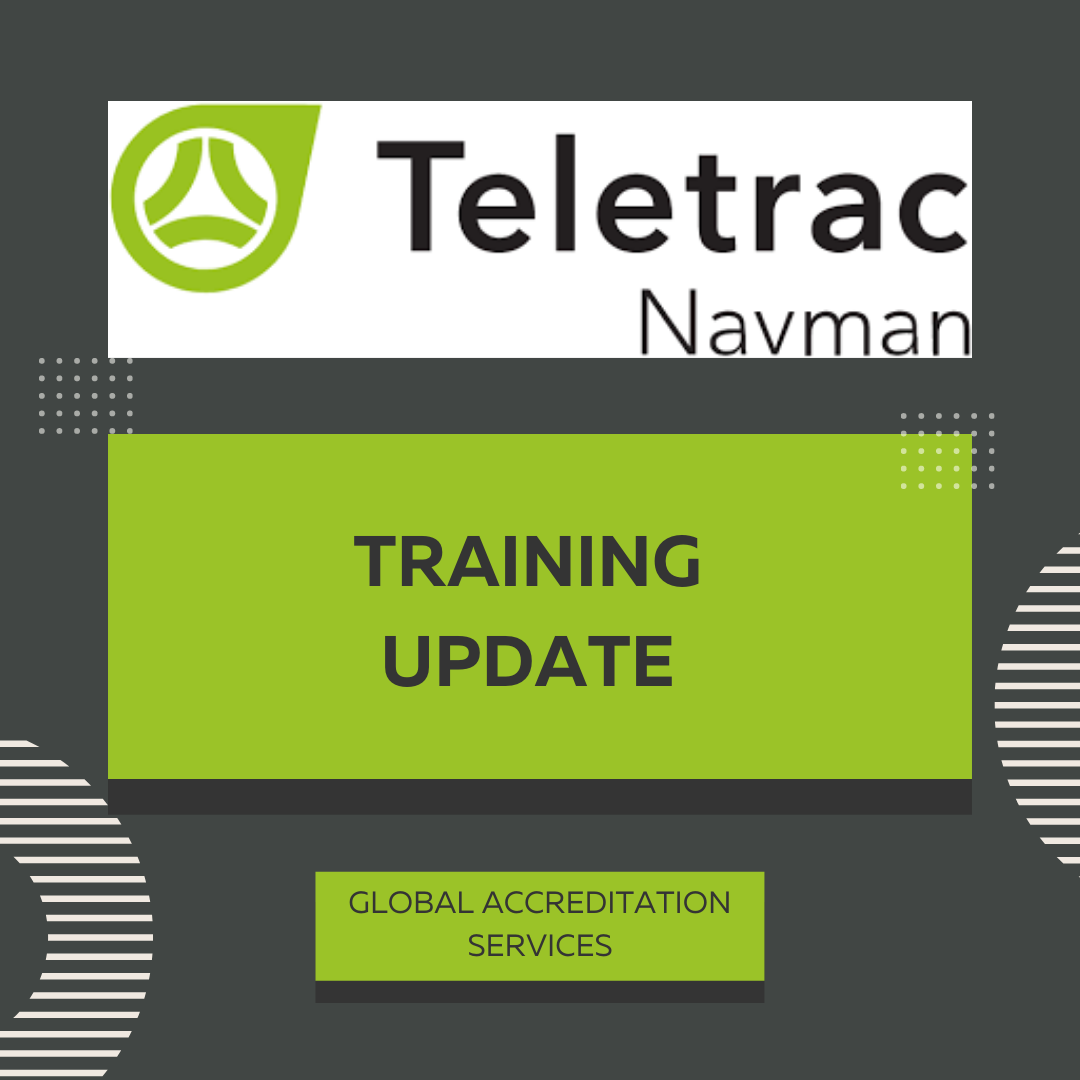 |
| A post send out following a recent training session was missing the link for the session recording. Apologies, you can access the training session here. After our training call this morning we also developed an FBT cut sheet which is now also available on the Dealer Community along with the FBT e-Book.
Also, please note that the addition of the VT102 on the new e-Order is to include it for DIRECTOR. VT102 can now be ordered for any transport customers (TN360 or DIRECTOR) as well as any order with a requirement for 2 or more peripherals. |
| |
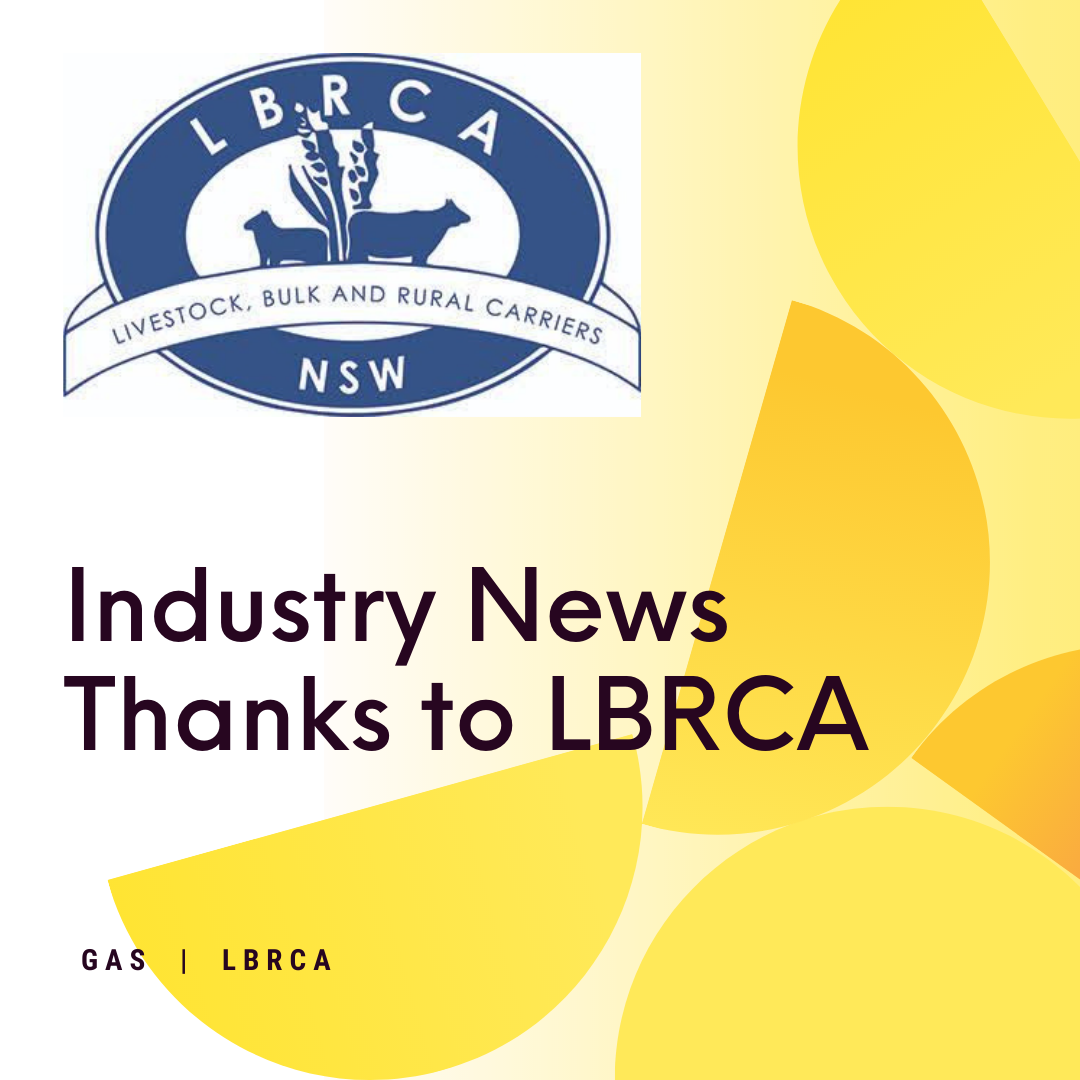 |
| |
| |
| |
| |
REGISTRATION OPEN: LBRCA ANNUAL CONFERENCE WAGGA Register now for the 2022 Livestock Bulk and Rural Carriers Association Annual Conference, being held on 26-28 May at The Range Function Centre. LBRCA annual conferences are for everyone, and our program is aimed at highlighting the issues that impact you day in and day out. - Download the conference registration form here.
- Download the conference brochure here.
LBRCA has partnered with Ozaccom+ to reserve accommodation close to the conference venue at great rates. Two venues are available for accommodation and include the International Hotel Wagga (main venue) and Best Western Plus Bolton on the Park Wagga. - Book your accommodation here.
HV MASS ASSESSMENT - COMPLIANCE AND ENFORCEMENT BULLETIN The NHVR is reminding all operators that mass measurement adjustment only applies when an authorised officer weighs a heavy vehicle for compliance purposes and can’t be used when you’re calculating the mass of your own load.
Read more here. CHARGES FILED AGAINST TRANSPORT COMPANY The NHVR has filed charges against a transport company and its Director/Administration Manager. South Australia Police commenced an investigation following a fatal crash involving a car and a road train, killing a woman, on the Augusta Highway near Red Hill on 27 December 2020. Based on the investigation by the South Australia Police Heavy Vehicle Enforcement Unit, category 2 charges have been laid under the Heavy Vehicle National Law. The matter is listed for a first mention in the Adelaide Magistrates’ Court on 22 April 2022.
Charges have also been laid against a cement company and its executives following an eight-month investigation led by South Australia Police, where a heavy vehicle driver was killed in Piccadilly on 12 October 2020. It is alleged that the South Australian company, its owner/Managing Director, and another manager knew the heavy vehicle was defective but allowed it to be used on the road. They have been charged with Category 1, 2 and 3 offences under the Heavy Vehicle National Law (HVNL).
Read more here. To join the LBRCA, click the following link https://www.lbrca.org.au/membership/join-us/ |
| |
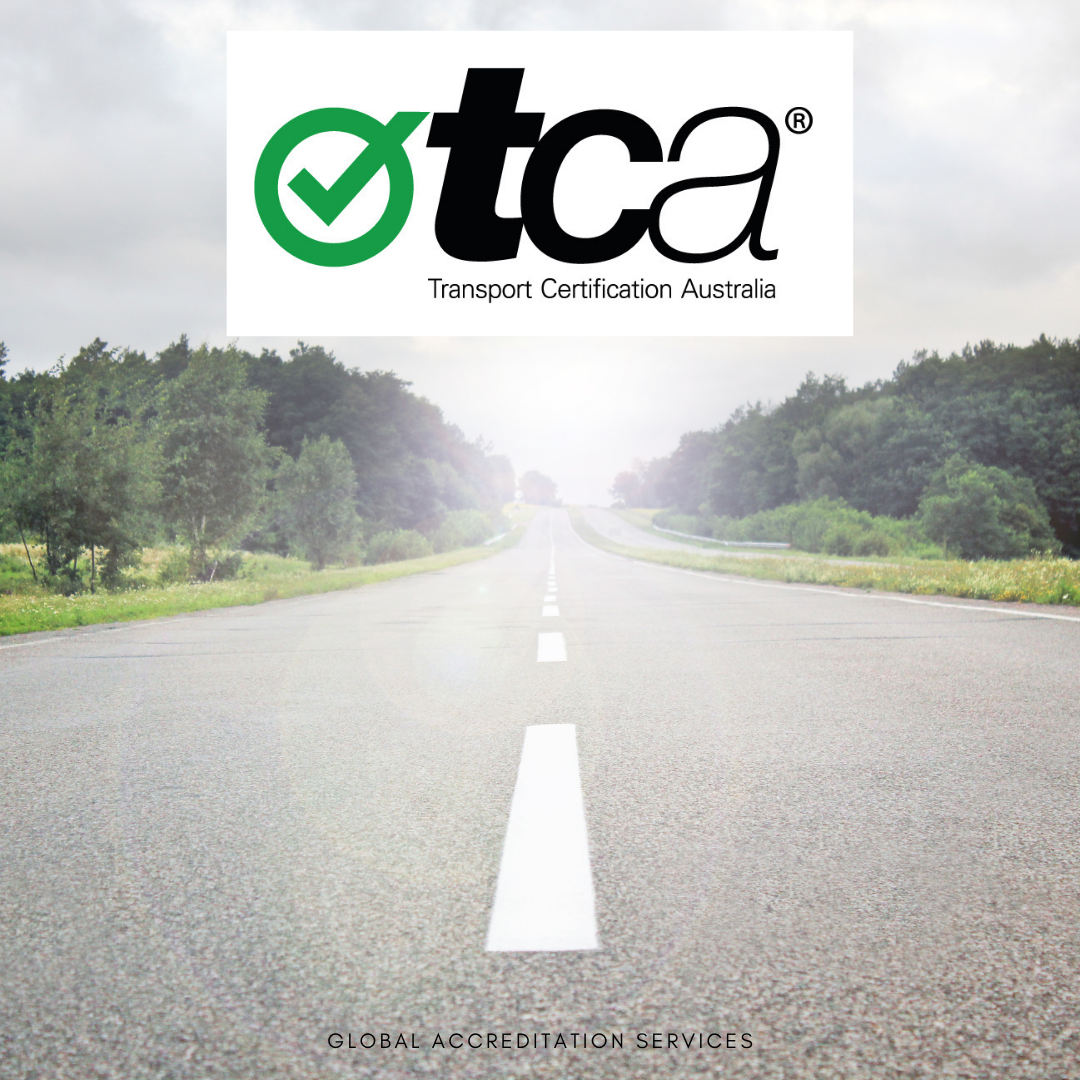 |
New Smart OBM system from Right Weigh
Transport Certification Australia has today announced that Right Weigh has obtained type-approval of a Smart OBM system at Category B.
Right Weigh has achieved type-approval for Smart OBM by collaborating with
V-DAQ – a certified provider that offers the Telematics Monitoring Application (TMA) and Road Infrastructure Management (RIM) through the National Telematics Framework.
Andy Mount, President and CEO at Right Weigh, said, “Our mission is to provide reliable and affordable load scale systems that support productivity, profitability and safety for the Australian transport industry. Right Weigh’s 201 series Smart OBM approved gauge offers the most convenient, affordable system available to fleets in Australia.”
Paul Fenech, Director at V-DAQ, said, “This type-approval demonstrates a combined effort between V-DAQ and Right Weigh to deliver what is possible with new and emerging technologies. The V-DAQ Right Weigh Smart OBM solution enables operators of all sizes to meet their Smart OBM requirements simply and affordably.”
Click here to view the media release
|
| |
 |
| NEED HELP WITH CONTRACTORS? Whether your company is experiencing high attrition rates or not, these current events should lead every contracting team to think very seriously about its management processes, writes Nathan Kale. It’s a post-pandemic change that no one saw coming. Dubbed the “Great Resignation”, according to recent research by Microsoft, more than 40 per cent of the global workforce is ready to resign at some point this year. One of the biggest surprises is who’s resigning, and contracting teams have reason to be concerned. Job turnover has historically been fairly common among younger employees with less experience and less financial stability. This new exodus, however, is driven by mid-career employees, aged 30 to 45, according to Harvard Business Review. These employees carry with them a deep understanding of how their organisations operate and deliver value. For contracting teams, resignations like these can be especially challenging at both a macro and micro level. At a macro level, contract management has historically been treated as complicated, specialised work where institutional knowledge and established relationships power the process. Many companies still handle their workflows using homegrown, non-automated procedures (or, worse yet, with lots of documents saved in Outlook and desktops). In these contexts, contracting practices can be opaque to newcomers and take more time and guidance for new talent to become conversant with them. If contracting professionals aren’t around to support newcomers, it gets that much harder to attract, onboard and retain new talent. At the micro level, when new talent is brought in and enters a deal mid-flight, they lack visibility over all that’s taken place in the negotiation process up to that point. Deals might stall as the new contract manager takes over, or negotiations may end up reversing the work of the previous team. Whether your company is experiencing high attrition rates or not, these current events should lead every contracting team to think very seriously about whether their contract management processes are documented and repeatable, or if their contract management expertise could walk out the door at any moment. Contract management software can go a long way to ensuring it’s the former, not the latter. A unified contract life cycle management (CLM) platform consolidates all of a company’s contracts and templates out of Outlook and into a single location for easy search and access; approval hierarchies can be built so there’s no question as to who needs to see what contract when; and contract risk scores can help highlight contract attributes that matter most to the company. It all depends on the written contract Two related decisions handed down by the High Court of Australia on Wednesday 9 February 2022 continue the approach of the Court enunciated in the Workpac v Rossato [2021] HCA 23 (Rossato) decision handed down last year giving primacy to the terms of the written contract to determine the nature of the relationship between the parties. Rossato was concerned with determining whether an established employment relationship was permanent or casual employment. The two decisions handed down this week, ZG Operations Australia Pty Ltd v Jamsek [2022] HCA 2 (Jamsek) and CFMMEU v Personnel Contracting Pty Ltd [2022] HCA 1 (Personnel Contracting), were dealing with questions of whether individual workers were employees or independent contractors. Jamsek concerned two drivers who were originally employees. In 1986, at the instigation of the employer, they ceased to be employees, established partnerships with their respective spouses and then each partnership entered into a written contract to provide a truck and driver to perform delivery work for the previous employer. Whereas the Full Court of the Federal Court held they were employees based on the “substance and reality” of the relationship, the High Court held that approach was wrong. It cited its own decision in Personnel Consulting, referring to the following paragraphs: “While there may be cases where the rights and duties of the parties are not found exclusively within a written contract, this was not such a case. In cases such as the present, where the terms of the parties’ relationship are comprehensively committed to a written contract, the validity of which is not challenged as a sham nor the terms of which otherwise varied, waived or the subject of an estoppel, there is no reason why the legal rights and obligations so established should not be decisive of the character of the relationship. Not only is there no reason why, subject to statutory provisions or awards, established legal rights and obligations in a contract that is entirely in writing should not exclusively determine the relationship between the parties but there is every reason why they should. The “only kinds of rights with which courts of justice are concerned are legal rights”. The employment relationship with which the common law is concerned must be a legal relationship. It is not a social or psychological concept like friendship. There is nothing artificial about limiting the consideration of legal relationships to legal concepts such as rights and duties. By contrast, there is nothing of concern to the law that would require treating the relationship between the parties as affected by circumstances, facts, or occurrences that otherwise have no bearing upon legal rights.” In the Jamsek case, the Court determined, on the wording of the contracts, that the partnerships were the contracting parties with the principal business, and the individuals were not employees of the principal business. The question of whether the individuals could fit within the expanded definition of “employee” for the purposes of the superannuation guarantee legislation was referred back to the Federal Court as it had not been determined by the Full Court in its decision. The High Court considered the Australian Taxation Office should be given an opportunity to participate in such proceedings. In the Personnel Consulting case, the High Court determined that, despite the individual being labelled a contractor, the terms of the contract were such that he was an employee. This was because the written contract gave the company the right to control the work that the individual could do and how he could do it. The individual was a labourer. Personnel Consulting was a labour hire firm. It provided labourers to building companies. While the contact designated the individual to be a contractor, the Court said: “Uncertainty in relation to whether a relationship is one of employment may sometimes be unavoidable. It is the task of the courts to promote certainty with respect to a relationship of such fundamental importance. Especially is this so where the parties have taken legitimate steps to avoid uncertainty in their relationship. The parties’ legitimate freedom to agree upon the rights and duties which constitute their relationship should not be misunderstood. It does not extend to attaching a “label” to describe their relationship, which is inconsistent with the rights and duties otherwise set forth. To do so would be to elevate their freedom to a power to alter the operation of statute law to suit themselves or, as is more likely, to suit the interests of the party with the greater bargaining power.” Lessons for employers If it wasn’t before, it is now absolute that a written contract between an employer and employee, or between a principal and contractor, is fundamental to establishing the nature of the relationship between the parties. It is also clear that the label the parties give to the relationship will not be determinative if the other aspects of the written contract contradict that label. Finally, it is important to remember that the Fair Work Act prohibits sham contracting (not alleged in either of these proceedings), an example of which might be an employer suddenly converting all production employees to be independent contractors. |
| |
| 
TCA type-approves new Smart OBM from Knorr-Bremse
Transport Certification Australia is pleased to announce the type-approval of a Smart On-board Mass (OBM) system from Knorr-Bremse Australia Pty Ltd.
Based in Munich, Germany, and already with a long footprint in Australia, the Knorr-Bremse Group can boast the addition of a Smart OBM system to its world-leading manufacture of braking systems.
The new Smart OBM at Category B adds to Knorr-Bremse’s OBM system (Category A) that TCA type-approved in July 2021.
Click here to view the media release |
| |
 |
Notice provides alternative road access during Central Queensland flooding To enable the supply of food and other essential goods between South Australia and the Northern Territory while key rail and road routes in Central Australia are cut by flooding, the NHVR has issued a notice allowing increased freight capacity on alternative road networks.
The National Class 2 Supplementary Access (Northern Territory Assistance) Authorisation Notice 2022 (No.1) provides Class 2 heavy vehicles that are road trains up to 53.5m long with temporary access to a specified route from South Australia to Queensland via New South Wales, to join the Road Train Type 2 Network through Queensland to Darwin.
While this notice remains in place, all other vehicles are advised to exercise extra caution while overtaking, as these road trains are longer than the vehicles that normally operate on this route.
This notice will expire at midnight on 24 February 2022. > Read more about the notice here NatRoad helps spread the Don’t #uck With A Truck message with young driver competition The National Road Transport Association is partnering with the our “Don’t #uck With A Truck” campaign to drive its message home to young road users.
NatRoad members can invite the L or P plate drivers in their lives to share a video or photo on Facebook, Instagram, TikTok or Twitter with the hashtag #dontmuckwithatruck and #natroad to win gift card and merchandise prizes.
“We want safer road behaviours from L and P platers and we want their family members to be safe,” said National Road Transport Association CEO Warren Clark.
NHVR CEO Sal Petroccitto added, “We’re pleased that NatRoad, and the wider industry, is helping to spread this important message, and I encourage everyone to share it to help make our roads safer.” $5.6 million in heavy vehicle safety grants close soon Applications for a record $5.6 million in funding for the NHVR’s Heavy Vehicle Safety Initiative (HVSI) will close 5pm (AEST) Monday 14 February.
NHVR CEO Sal Petroccitto said Round 7 HVSI grants are open to any industry group, organisation or council that can deliver tangible improvements to heavy vehicle safety.
“There is only two weeks left to apply for HVSI funding – now is the time to submit projects that can make Australia’s roads safer for all road users and ultimately save lives,” Sal said.
For more information, including Submission Guidelines and new Application Form, visit www.nhvr.gov.au/hvsi Industry Investigates Coupling Strength In an industry and world first, the ARTSA Institute, Australian Trucking Association, Truck Industry Council and Heavy Vehicle Industry Australia (HVIA) are investigating dynamic loads on the couplings on heavy high productivity freight vehicles and PBS combinations vehicles.
The safety of couplings project is funded by the Commonwealth Government through the NHVR’s Heavy Vehicle Safety Initiative and will fill a gap in knowledge and provide evidence to update relevant Standards and Rules.
“Coupling failure on high productivity vehicles has the potential to lead to death and injuries, major traffic disruption and reduced public confidence in heavy vehicle safety,” said HVIA CEO Todd Hacking said. “It is important for regulators and industry to be confident in the relevance and integrity of the Standards that guide the safe selection of components.”
> Find out more about the couplings project Safety Solutions Can Be Achieved in the Trucking Industry In a recent column, NHVR CEO Sal Petroccitto discussed the importance of safety on the road and in the workplace.
Sal emphasised the importance of increasing the percentage of industry that have a basic Safety Management System (SMS) in place beyond half, to improve safety for the whole supply chain.
“I’d like to see this number rise significantly, so that everyone in the industry can reap the benefits of safety-first culture,” Sal said.
> Read Sal’s article here Renewed notice continues record-keeping flexibility in New South Wales Drivers of eligible fatigue-regulated heavy vehicles operating under strict conditions in NSW can receive an exemption from recording work and rest hours under the New South Wales Fatigue Record-Keeping Exemption Notice 2022.
The recently renewed notice only applies to drivers of heavy vehicles carrying out the following specified classes of work in NSW: - Working in an area within a radius of 100km or less from the driver’s base with the primary purpose of:
- motor dealing, repair, inspection, maintenance or testing
- manufacturing heavy vehicles
- the hire and rental of heavy vehicles.
- Working within a radius of 160km or less from the driver’s base for the purpose of primary production.
The notice comes into effect on 10 February 2022, and will replace the New South Wales Fatigue Record-Keeping Exemption Notice 2019 (No.1). Road Train MDL Dimension and Axle Spacing Check Sheet A new Road Train Mass, Dimension and Loading (MDL) Dimension and Axle Spacing Check Sheet will help operators check if their axle spacing mass limits complies with the Heavy Vehicle MDL National Regulation.
To use the Check Sheet, operators simply enter vehicle and axle group length, height and width to indicate if the vehicle combination receives a “PASS” result.
The tool enables operators to work under select notices and permits with certainty, as they can quickly calculate whether their vehicle combination is compliant.
> Click here to view the Check Sheet under the Resources tab of the National Class 2 Road Train Authorisation Notice 2020 Operator's Guide |
| |
| |
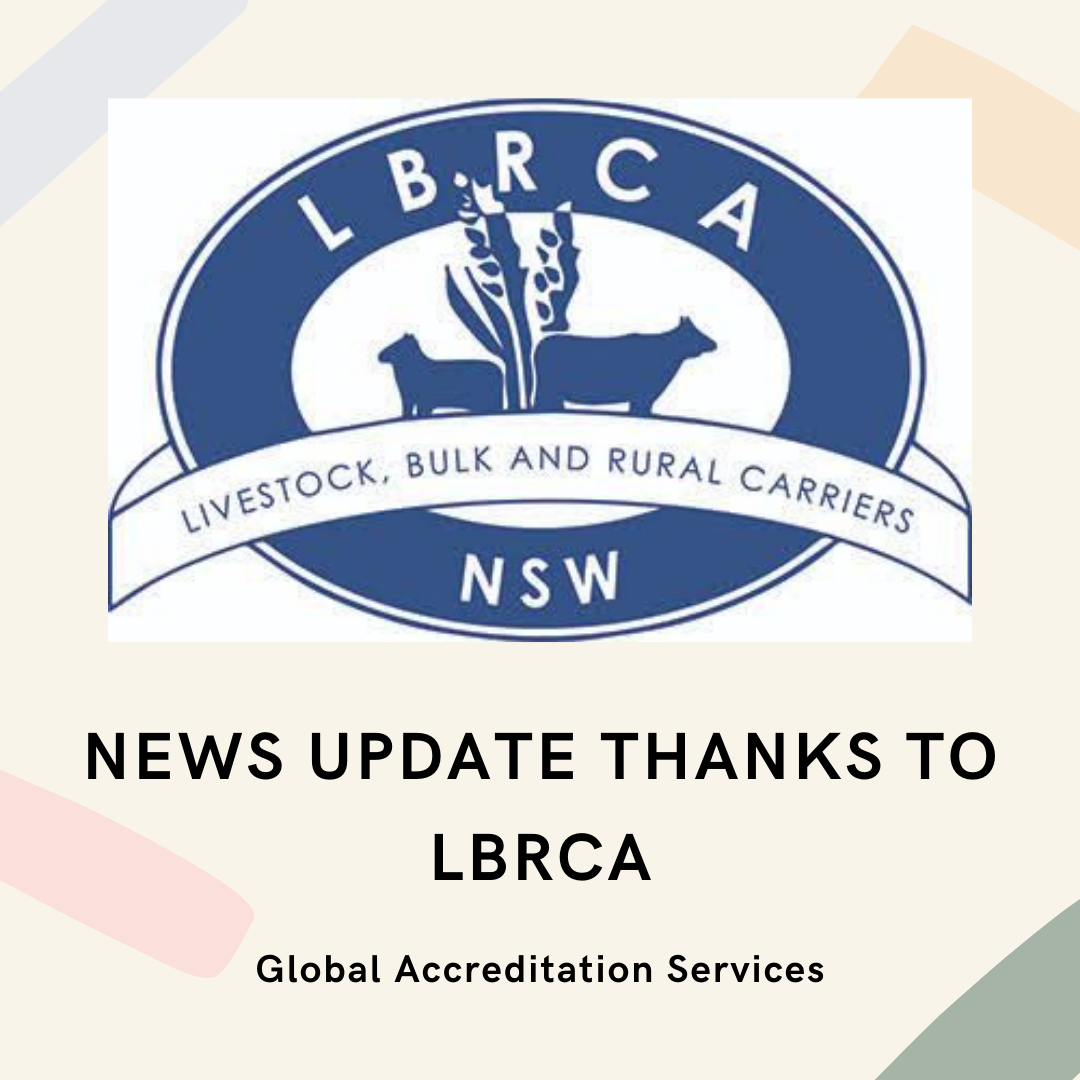 |
| INDUSTRY ADVOCATES RECOGNISED IN AUSTRALIA DAY HONOURS LBRCA Life Member and local Hay Shire champion Phyllis Jones was recognised as Hay Citizen of the Year at the Australia Day Commemoration Service on Wednesday 26 January 2022.
Phyllis is not only a long-term advocate for the rural and regional road freight sector she is a strong local advocate who is very well respected in her hometown of Hay.
Congratulations are also in order for Forbes Shire General Manager Steve Loane who was awarded an Order of Australia Medal for his service to the livestock industry, and to local government. ATO INCREASES FUEL TAX CREDIT RATES The Australian Tax Office has announced that fuel tax credits will increase from the 1st of next month in line with fuel excise duty rate changes.
The new rate for diesel used in heavy vehicles for travelling on public roads is 17.8 cents per litre and 44.2 for off road travel.
Read more here. AGRICULTURAL HV ZONE MAP TRAINING VIDEO RELEASED The NHVR has updated the National Class 1 Agricultural Vehicle and Combination Mass and Dimension Exemption Notice Operator’s Guide to be more user-friendly.
They have also produced an Agricultural Heavy Vehicle Zone Map training video to help you quickly find approved access zones, conditions of access, and prohibited roads and structures. - Watch the training video here.
- Check out the Operators Guide here.
|
| |
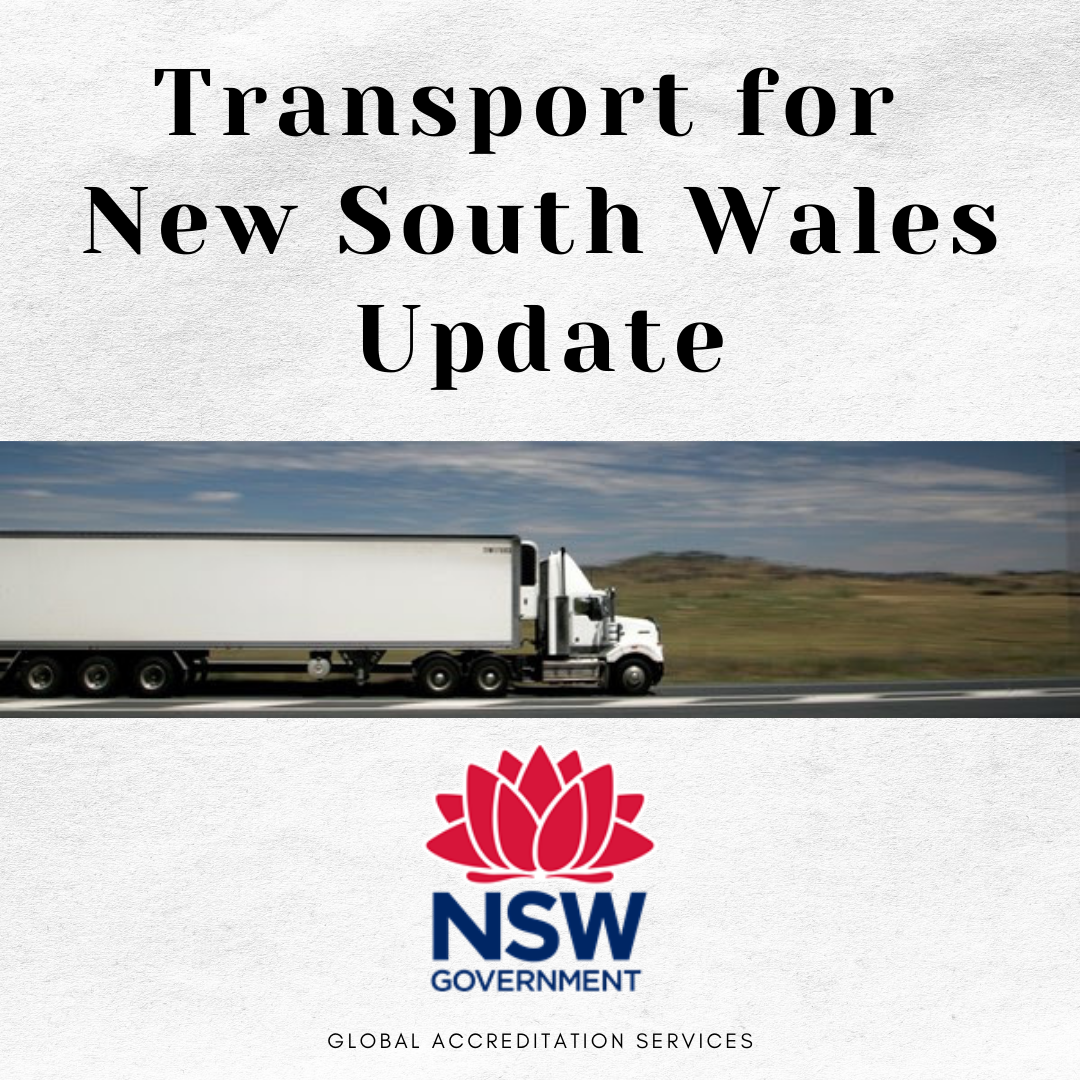 |
| Type 2 Road Trains up to 53.5 metres to temporarily travel through Broken Hill, Cobar and Bourke As a result of flooding in central Australia closing access from the southern states to the Northern Territory along the Stuart Highway and Birdsville Track, Road Trains up to 53.5 metres in length have been granted temporary access on the Barrier Highway from the South Australian border through Broken Hill to Cobar on Kidman Way to Bourke and on the Mitchell Hwy to the Queensland border. Approval for access under a notice for Type 2 Road Trains has temporary been granted for the 800 kilometre route through NSW and is part of detour these Road Trains will have to travel for a number of weeks until the flood water recedes and the routes are able to be accessed again. Traffic control will be in place to support the safe movement of these vehicles at Broken Hill the corner of Iodide and Williams streets and Iodide and Argent streets. Changed traffic conditions will be in place at Cobar the corner of Barton Street and Barrier Highway. Type 2 Road Trains are restricted to travelling at 90 km/hr. All other vehicles are advised to overtake with caution due to the length of the vehicles. For the latest traffic updates, call 132 701, visit livetraffic.com or download the Live Traffic NSW App. |
| |
 |
| Amid all the talk about truck driving apprenticeships, James Hadley is proof that receiving the correct advice and training is not only the ideal path to a successful career in road transport but, in this case, receiving the keys to a sparkling clean and comfortable Kenworth T610 Tell me and I forget. Teach me and I remember. Involve me and I learn" – Benjamin Franklin. It’s a pretty deep and philosophical way to start my first story of the new year. Bear with me though folks, I’m not just trying to impress you with inspiring quotes, there is method in my madness. This quote by Benjamin Franklin who, along with being known as one of the founding fathers of the country responsible for extremely long, low, cool trucks (the United States), he was also the inventor of swim fins and bifocals. None of that is really that important. The point of the quote is that it sums up the young man behind the wheel of the Fred’s Transport Kenworth T610 you see before you – James Hadley. click here to read the full article:https://www.ownerdriver.com.au/industry-news/2201/totm-rising-through-the-ranks-kenworth-t610-sar |
| |
|
| INTRODUCING VT102
Teletrac Navman's New TCA Type-Approved Device We are excited to announce the release of the VT102, a TCA Type-Approved telematics device powered by AI-enabled fleet management software to power high level insights and data for transport operators.
The VT102 has been Type-Approved by Transport Certification Australia and provides Level 1,2 and 3 assurance for use in Road Infrastructure Management (RIM), Telematics Monitoring Application (TMA) and Intelligent Access Programs (IAP), allowing for greater access and information of road networks throughout Australia.
TCA’s Executive General Manager, Stuart Ballingall, says, "The VT102 telematics device satisfies the highest level of performance requirements demanded by road managers and regulators. Having been type-approved at Level 3 assurance, the device can be used for regulatory schemes where the need for strong accuracy, reliability and security outcomes are demanded by stakeholders.” To find out more about the VT102 check out the Teletrac Navman website, or contact Greg on greg@globalaccreditation.com.au or 0417 585 223. |
| |
| |
 |
New Regulatory Advice on light to medium heavy vehicles released
The NHVR has released new regulatory advice about identifying and managing the safety risks of light to medium heavy vehicles.
This is the second in a series of regulatory advice pieces to help industry and the supply chain better understand Chain of Responsibility laws.
Operators or owners of light to medium heavy vehicles – that’s a vehicle with a GVM or ATM of more than 4.5t and less than 12t – may not be aware of their legal obligations under the HVNL.
This new guidance provides an easy-to-read snapshot of what risks are involved, who has a responsibility to manage those risks, and some useful advice and resources.
More regulatory advice will be released in the coming weeks and industry is encouraged to provide feedback via the NHVR website.
> Read the new regulatory advice here
|
| |
 |
“Don’t #uck With A Truck” - New safety campaign to educate young drivers The NHVR has launched a new major road safety awareness campaign titled Don’t #uck With A Truck targeting Learner (L) and Provisional (P) licence holders.
NHVR CEO Sal Petroccitto said the campaign demonstrates how L and P licence holders can drive safely around trucks, including rules to follow when trucks are turning, stopping and how to overtake a truck.
“The campaign is intentionally provocative and is designed to grab the target audience’s attention and start important conversations around road safety,” Sal said
> To read more about the campaign, click here |
| |
| |
 |
Teletrac Navman obtains type-approval for new telematics device Transport Certification Australia is pleased to announce the type-approval of a new telematics device from Teletrac Navman.
The VT102 meets the highest level of assurance which can be obtained through the National Telematics Framework.
Mr Andrew Rossington, Chief Product Officer at Teletrac Navman, said, “This next generation device for the future adds to our suite of telematics solutions available to the industry, allowing operators to choose the right solution for their needs, using applications of the National Telematics Framework.”
He added, “The VT102 supports current applications of the National Telematics Framework, such as the Road Infrastructure Management (RIM) application,Telematics Monitoring Application (TMA) and Intelligent Access Program (IAP) – already available through Teletrac Navman for transport businesses looking to improve access and increase payload.”
Click here to view the media release
|
| |
| |
 |
Extension to NHVAS Temporary Business Rules and Standards changes The NHVR has extended the temporary changes to the NHVAS medical requirements and face-to-face audit requirements, in response to the ongoing coronavirus pandemic and social distancing requirements. The following arrangements are now effective until 29 April 2022. The situation will be monitored for further extensions of these temporary changes if needed. These changes are: - auditors can undertake all document and records validation and audits remotely, requesting electronic copies be emailed to them or by another suitable method and conducting conversations over the phone or in another form where applicable
- heavy vehicle drivers operating under Advanced Fatigue Management (AFM) or Basic Fatigue Management (BFM) accreditations may continue to drive with an expired driver medical
- the maximum time a driver may use an expired medical is six (6) months
Remote Auditing The NHVR recognises the impacts that the coronavirus pandemic is having on the ability for auditors to conduct audits in person. To enable NHVAS processes to continue, a temporary change has been made to the Business Rules and Standards that allows remote ‘off-site’ auditing. Auditors can: - request that documents and records are sent to them electronically
- conduct interviews with operator representatives via telephone or other means.
The change has been approved on the basis that suitable controls are used to ensure that the auditor’s conclusion can be substantiated with reliable and credible evidence. Auditors must still: - Ensure policies, procedures and records are made available for analysis
- Ensure parties are available for interview where necessary
- Complete the NHVAS audit matrix
Additional Requirements To provide a level of confidentiality when recording the address for when a remote audit may be conducted at your home address it is acceptable to record phases on the audit summary report such as; Auditor’s Home Address, Auditor’s Office Address or similar in place of recording the actual address if desired. For the NHVR portal records to be updated with the correct address for a remote audit, the address where the remote audit was conducted becomes one of the operating address for the operator. Again, staying with the confidentiality theme these same phases will be used in the portal records in place of an actual address if recorded as such on the audit summary report. In conjunction with the ability to conduct audits remotely a requirement is for auditors to supply a copy of the audit matrix completed at the time of conducting any audit. At the time the audit report is given to the NHVAS participant audited, a copy of the Audit matrix is to be emailed to NHVASaudits@nhvr.gov.au Important: Only the approved NHVAS Audit Summary report and matrices are permitted to be used. Expired BFM and AFM Driver Medicals In recognition of the limited amount of medical practitioners currently available, the amended NHVAS Business Rules and Standards allow a driver to continue to drive, even if their medical has expired. The maximum time a driver may use an expired medical is six (6) months. It continues to remain the responsibility of all NHVAS accredited operators to ensure drivers under AFM or BFM are fit for duty, including the need to undertake related risk assessments and have in place suitable risk controls. Accredited operators must also ensure their Register of Drivers is kept up to date, noting any expired medicals to be obtained as soon as reasonably practicable within six (6) months of the expiry date of the medical. General If you have been engaged by an operator to conduct an audit and you believe there may be challenges with conducting or concluding an audit due to current conditions, please ensure that you contact the NHVR before the operator’s accreditation expires. Please get in contact with the NHVAS Team on 13 64 87 as soon as possible if you have any questions or concerns about these changes. |
| |
 |
| Update on extension of Transport for NSW (TfNSW) COVID-19 testing sites TfNSW acknowledges the efforts of the freight industry to continue to transport critical supplies across the country in challenging circumstances. As such, to continue to support the freight industry in managing its operations, the six TfNSW COVID-19 testing sites will remain open for asymptomatic testing. We previously communicated that the TfNSW COVID-19 testing sites at Ballina, Narrandera, Taree, Tarcutta, Marulan and Yass would be closing from Monday 17 January as there is no longer a requirement for asymptomatic testing for freight workers travelling interstate. However, in light of current demand the sites will continue to operate for the remainder of January 2022. We will continue to monitor the demand at each site and will communicate plans for decommissioning the sites once confirmed. Update to operating hours: Assisted testing by pathology staff at the Narrandera COVID-19 testing site will be available 9am-5pm, 7 days a week. If you are displaying COVID-19 symptoms, you should complete a rapid antigen test (RAT) at home or a PCR test at your local NSW community testing clinic. Mask wearing, vaccinations, physical distancing, maintaining good hygiene, cleaning workplaces and health surveillance controls remain critical to our ability to reduce the risks of COVID-19. |
| |
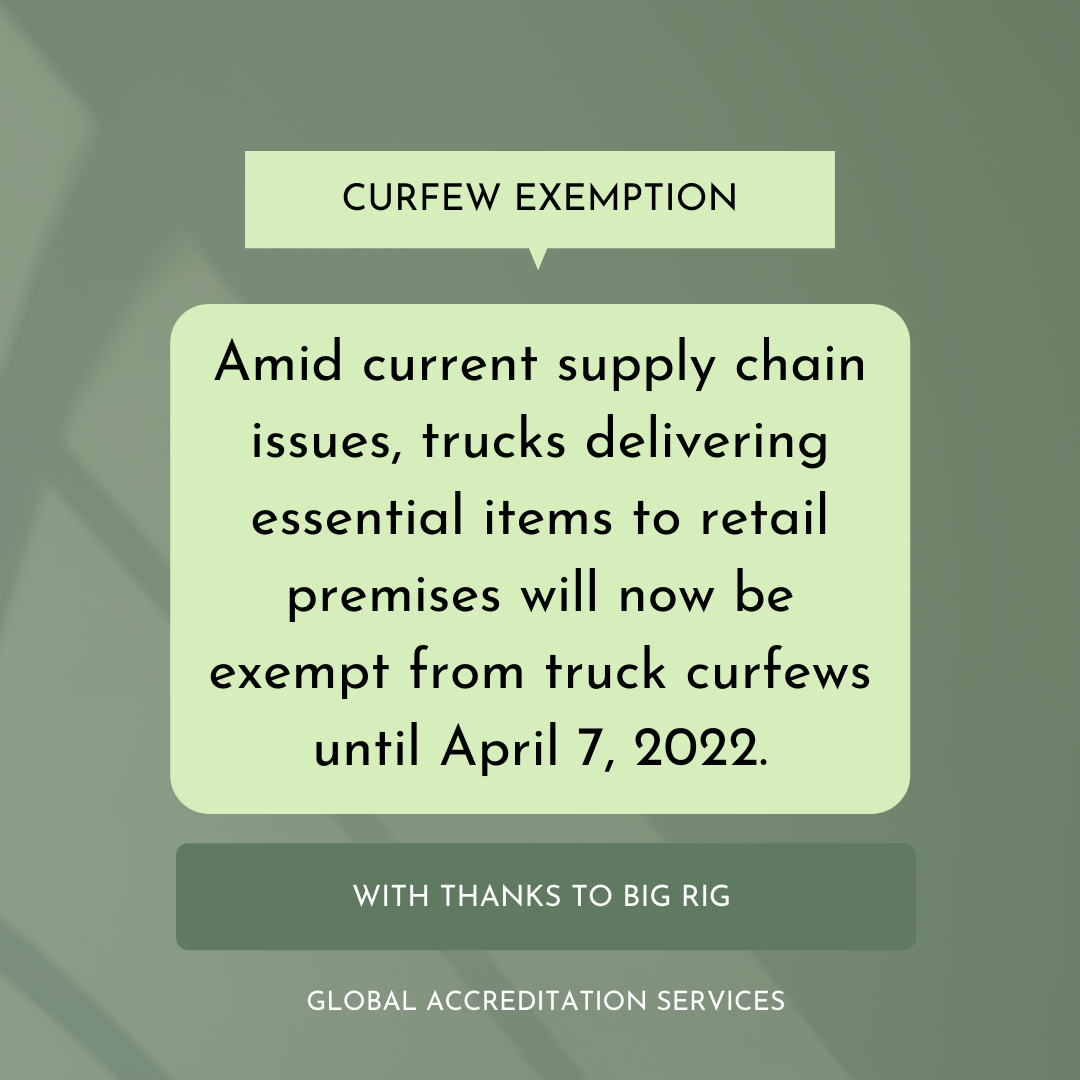
|
| Amid current supply chain issues, trucks delivering essential items to retail premises will now be exempt from truck curfews until April 7, 2022. The National Road Transport Association (NatRoad) has hailed today’s move as a step forward. “The Victorian Government has listened to industry pleas and reversed its decision to re-introduce heavy vehicle curfews,” said NatRoad in a statement. NatRoad Chairman Scott Davidson added, “We warned in November that the re-introduction of curfews was going to hit already disrupted supply chains and it’s always encouraging when a government listens and acts.“Any sensible action that any government can take to make the freight task easier in stressful times should be acknowledged. “The exemption means deliveries can be made to supermarkets and pharmacies facing high demand for food, medicine and Covid testing kits.” With truck curfews to be reviewed in early April, NatRoad is urging the Victorian Government to make the exemption permanent. NatRoad has also welcomed the Victorian Government’s announcement that many transport workers will be exempt from close contact isolation requirements from tomorrow, January 12. “We note that this applies where necessary for continuity of operations and when other options have been exhausted. “Also, exempted workers must be asymptomatic, undertake daily Rapid Antigen Tests for five days and return a negative result prior to attending work. “We recognise that this exemption brings truck drivers into line with critical healthcare workers in Victoria and as essential workers, neither should have to foot the cost. “We are hopeful that governments will make RATs available to both groups, free-of-charge.” |
| |
| |
|
| Click below to view industry updates from the following:   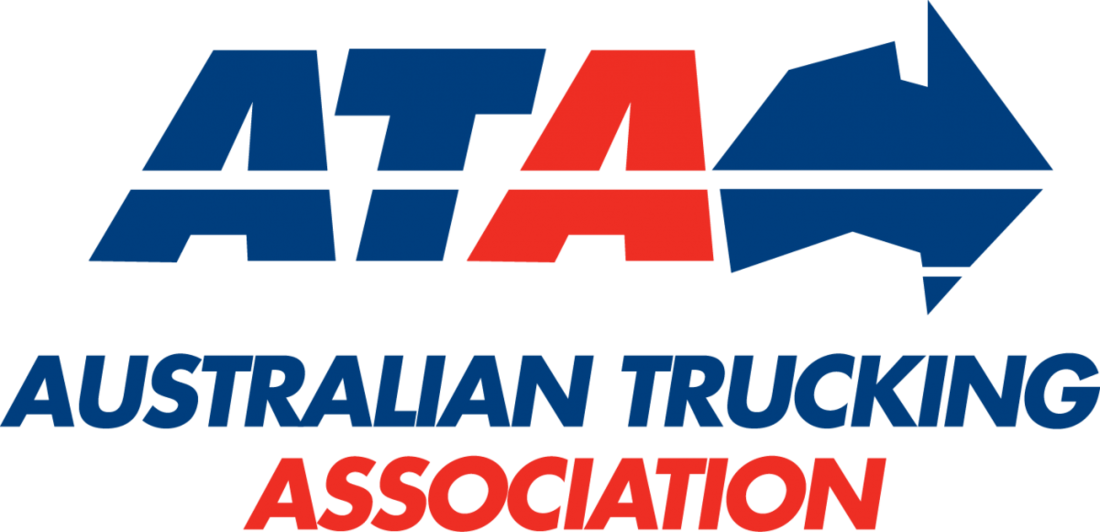 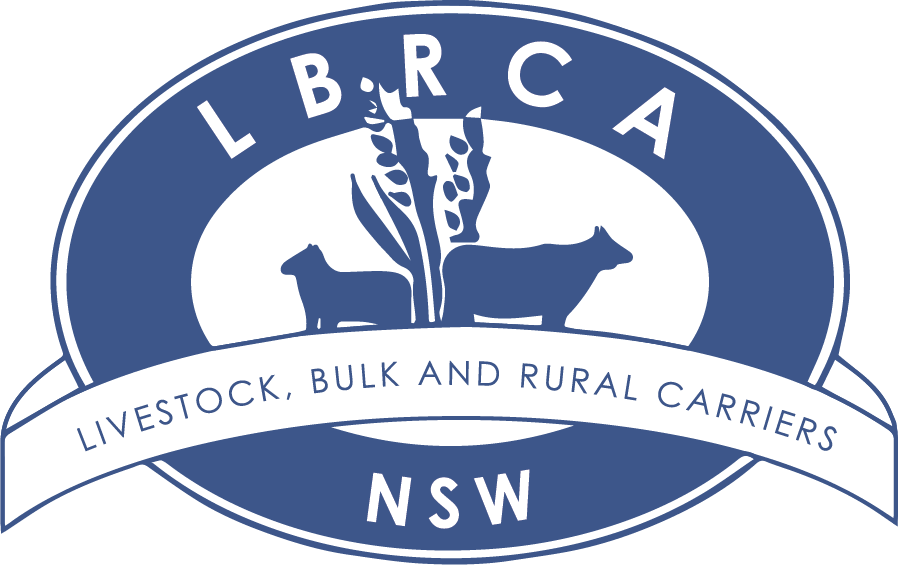 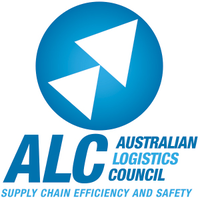
|
| |
| |
| |
| |
























